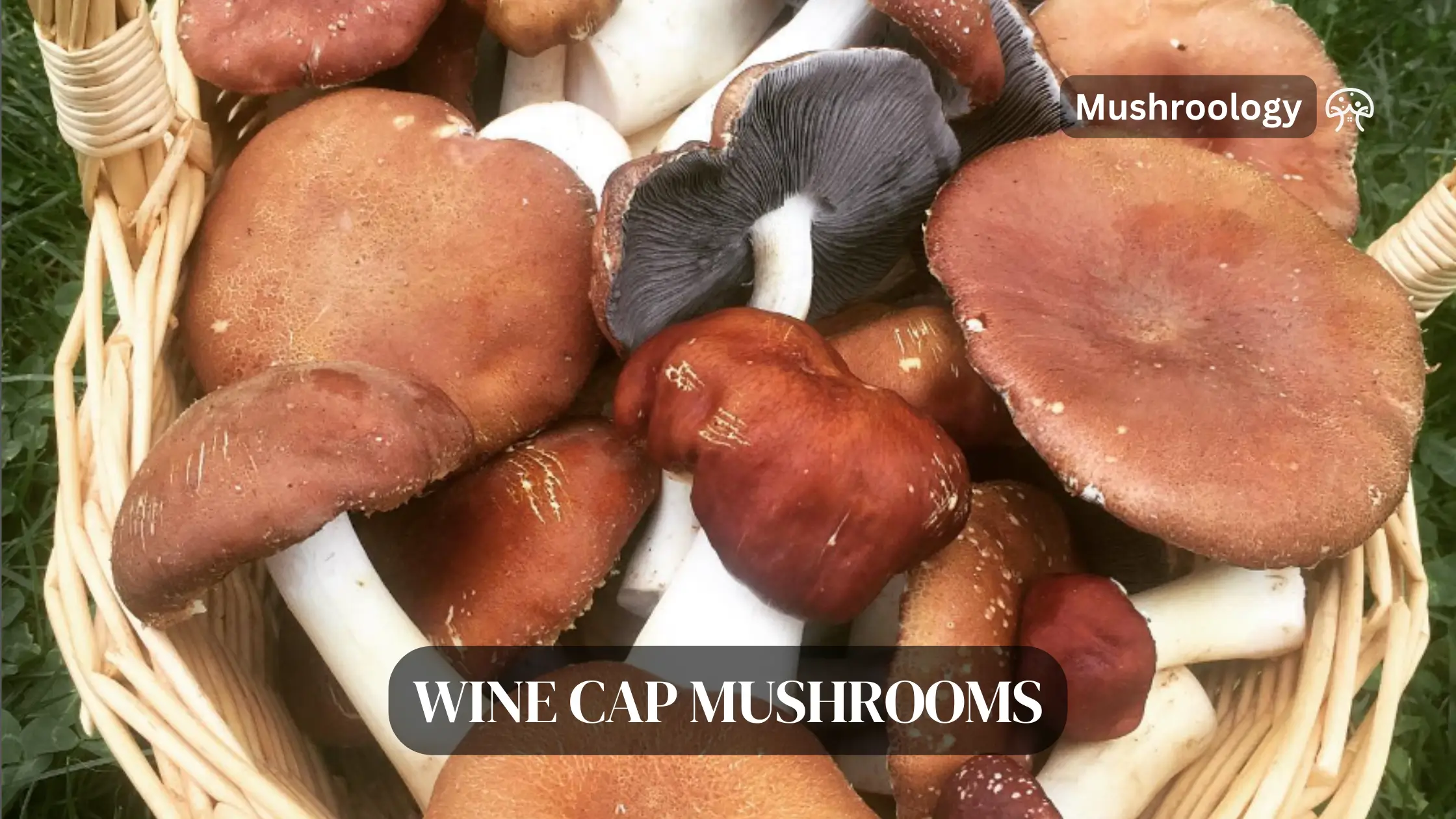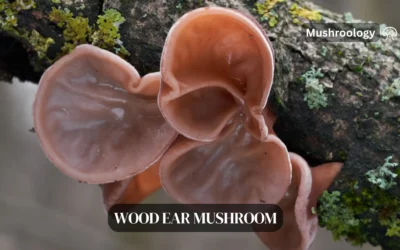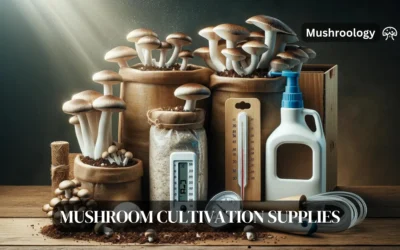Wine cap mushrooms (Stropharia rugoso-annulata) are among the easiest and most rewarding mushrooms to cultivate in your home garden. These distinctive mushrooms, with their burgundy-colored caps and robust growth habit, are perfect for beginner mushroom growers and experienced gardeners alike.
Unlike many other mushroom varieties that require controlled indoor environments, wine cap mushrooms thrive outdoors in garden beds, making them an accessible choice for home cultivation. Their ability to grow in symbiosis with your garden plants while improving soil health has made them increasingly popular among sustainable gardeners and permaculture enthusiasts.
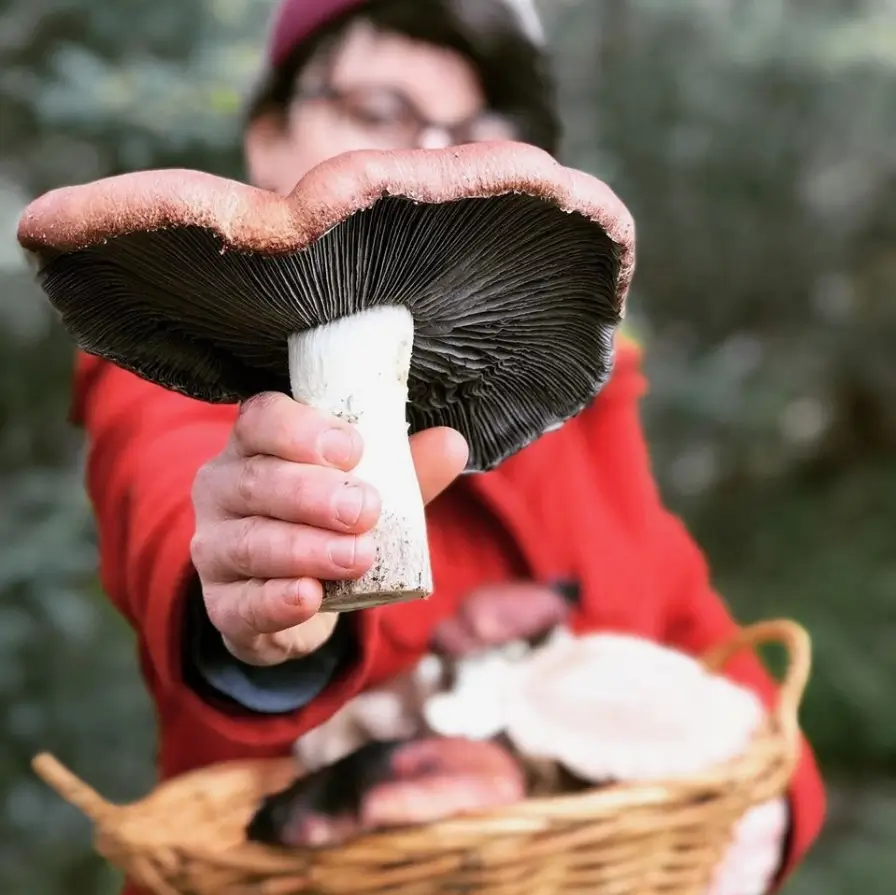
Where to grow Wine Cap Mushrooms
Wine cap mushrooms adapt to various garden environments, making them suitable for multiple growing locations. Understanding their environmental preferences helps you choose the optimal spot for cultivation:
Garden Beds and Borders
Established garden beds provide ideal conditions for wine cap mushrooms. Their extensive mycelial networks thrive in the nutrient-rich environment while benefiting neighboring plants through improved soil structure and nutrient cycling.
To incorporate wine caps into existing garden beds:
- Apply a 2-4 inch layer of fresh wood chips or straw between plants
- Inoculate this material with wine cap spawn
- Maintain consistent moisture
- Expect mushrooms to fruit seasonally for 2-3 years from a single inoculation
Under trees and shrubs
The partially shaded, naturally mulched areas beneath trees and shrubs create perfect microclimates for wine cap mushrooms. These locations typically maintain higher humidity and more consistent soil moisture, supporting robust mycelial growth.
Wine caps form beneficial relationships with many trees and shrubs, accelerating the decomposition of fallen leaves and small branches. This natural cleanup service reduces garden maintenance while improving soil health in these often-neglected areas.
Woodland edges
The transition zones between wooded areas and open spaces provide ideal conditions for wine cap cultivation. These naturally rich ecological boundaries offer the perfect balance of light, moisture, and organic matter.
Establishing wine cap colonies along woodland edges creates productive buffer zones that can yield substantial mushroom harvests while enhancing biodiversity in these transition areas.
Pathways and walkways
Garden pathways regularly refreshed with wood chips offer excellent opportunities for wine cap cultivation. Inoculating these areas serves multiple purposes:
- Creates productive use of otherwise unused space
- Accelerates decomposition of pathway materials
- Provides easy access for monitoring and harvesting
- Demonstrates the ornamental value of these attractive mushrooms
Raised Beds
Dedicated raised beds filled with layers of cardboard, straw, and wood chips create controlled environments for maximizing wine cap production. This approach allows precise management of moisture and substrate composition while providing physical separation from other garden components.
Raised bed cultivation is particularly valuable for growers primarily interested in mushroom production rather than soil improvement benefits.
There are several compelling reasons to consider growing wine cap mushrooms in your own garden.
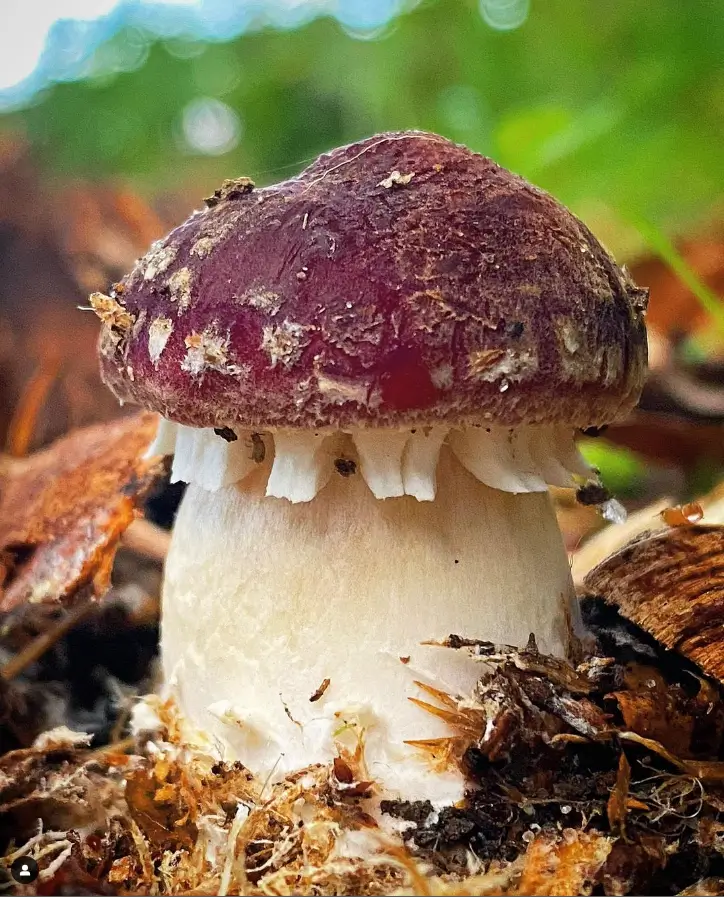
Step-by-Step Wine Cap Mushroom Growing Guide
Growing wine cap mushrooms successfully involves following a systematic approach. This detailed guide walks you through each critical stage of the cultivation process:
1. Select and Prepare Quality Substrate
Wine cap mushrooms thrive on woody materials rich in lignin and cellulose. The ideal substrate combines:
- Hardwood chips (oak, maple, or mixed deciduous woods)
- Straw (wheat or oat straw works best)
- Small amounts of composted manure or finished compost (optional)
Substrate preparation:
- If using fresh wood chips, allow them to age for 2-4 weeks to begin the decomposition process
- For straw, soak in water for 12-24 hours to thoroughly hydrate
- Drain excess water until substrate is damp but not dripping wet
- For optimal results, pasteurize substrate by soaking in hot water (160-170°F) for 1-2 hours
- Allow substrate to cool to room temperature before inoculation
2. Inoculate with Quality Spawn
Successful cultivation starts with high-quality spawn from reputable suppliers. Wine cap spawn comes in several forms:
- Grain spawn (fastest colonization)
- Sawdust spawn (economical for larger areas)
- Plug spawn (convenient for smaller projects)
Inoculation process:
- Spread a 2-4 inch layer of prepared substrate in your chosen location
- Break apart spawn into small pieces, distributing it evenly throughout the substrate
- Aim for approximately 1 part spawn to 5-10 parts substrate by volume
- Mix thoroughly to ensure even distribution of spawn
- Cover with a thin layer of straw or wood chips to retain moisture
- Water gently to ensure consistent moisture throughout
3. Maintain Proper Growing Conditions
Wine cap mushrooms require specific environmental conditions during their colonization phase:
- Temperature: 60-75°F (15-24°C) is ideal for mycelial growth
- Moisture: Keep substrate consistently moist but not waterlogged
- Light: Indirect light is beneficial for colonization
- Protection: Cover with breathable material during extreme weather
Maintenance schedule:
- Check moisture levels every 2-3 days, especially during dry periods
- Mist with clean water when the surface appears dry
- Protect from heavy rain and direct sunlight during the first 2-4 weeks
- After 4-6 weeks, look for white mycelial growth spreading through the substrate
4. Support Fruiting Conditions
Once the mycelium has fully colonized the substrate (typically 1-3 months), it’s time to encourage fruiting:
- Increase moisture through regular misting or light watering
- Maintain good air circulation around the growing area
- Look for pinhead formation (small button-like structures) indicating imminent fruiting
- Expect mushrooms to appear 7-14 days after pinheads form
Triggering fruiting:
- A temperature drop of 10-15°F can trigger fruiting
- Natural rainfall often initiates fruiting cycles
- Thorough watering after a dry period can stimulate mushroom production
5. Harvest and Maintain Production
Wine cap mushrooms typically produce multiple flushes (harvests) over a growing season:
- First harvest usually occurs 2-4 months after inoculation
- Subsequent flushes may appear every 2-4 weeks during favorable conditions
- A single bed can produce for 1-3 years, depending on substrate volume and conditions
Maintenance for continued production:
- After harvesting, gently water the bed to rehydrate the substrate
- Add fresh layers of wood chips or straw annually to maintain productivity
- During extreme weather, cover with breathable fabric to protect mycelium
How to harvest Wine Cap mushrooms
Proper harvesting techniques ensure maximum flavor and extended production from your wine cap mushroom beds. Follow these guidelines for optimal results:
Optimal Harvest Timing
Timing is crucial when harvesting wine cap mushrooms:
- Harvest when caps are fully opened but before the margins begin to curl upward
- Young specimens (2-4 inches in diameter) offer firmer texture and milder flavor
- Mature specimens (4-6 inches) provide more pronounced earthy flavors
- Avoid overmature mushrooms where caps have begun to flatten completely
- Morning harvesting preserves freshness and flavor
Proper Harvesting Techniques
The correct harvesting method preserves both the mushroom quality and future production:
- Grasp the mushroom stem firmly near the base
- Twist gently while pulling upward in one smooth motion
- Alternatively, use a sharp knife to cut just above soil level
- Avoid disturbing the surrounding mycelium
- Collect mushrooms in open baskets or breathable containers
- Immediately remove any damaged portions
Post-Harvest Bed Maintenance
Proper care after harvesting ensures continued productivity:
- Gently water the bed after heavy harvests to rehydrate the mycelium
- Remove any damaged or rotting mushrooms
- Avoid disturbing the mycelial network when cleaning the area
- Apply a thin fresh layer of substrate material if needed
- Check for signs of pests or contamination
Yield Expectations
Understand typical production patterns for realistic planning:
- Initial flush typically yields 0.5-1 pound per 10 square feet
- Subsequent flushes may produce slightly smaller harvests
- Seasonal variation affects yield, with spring and fall often being most productive
- A well-maintained bed can produce 2-5 pounds per 10 square feet annually
- Production typically peaks in the second year after inoculation
Where to Buy Wine Cap Mushroom Spawn?
If you’re looking to cultivate your own wine cap mushrooms, you’ll need to source high-quality wine cap mushroom spawn. Luckily, there are reputable suppliers that offer a range of options to suit your needs. One such supplier is Field and Forest Products, a trusted name in the mushroom cultivation industry. They provide both peg spawn and sawdust spawn, allowing you to choose the type that best fits your growing method.
While Field and Forest Products is highly recommended, there are other suppliers available online or at local mushroom cultivation stores. It’s always a good idea to do your research and read reviews to ensure you’re purchasing from a reliable source. By buying wine cap mushroom spawn from reputable suppliers, you can set yourself up for success in growing this delicious and versatile mushroom variety.
Here is a table listing a few vendors of wine cap mushroom spawn:
| Vendor Name | Product Description | Link |
|---|---|---|
| North Spore | Organic Wine Cap Mushroom Sawdust Spawn | North Spore |
| Baltispore | Wine Cap Mushroom Spawn | Baltispore |
| Henosis Mushrooms | Wine Cap Mushroom Spawn – Stropharia Rugosoannulata | Henosis Mushrooms |
| Gardener’s Supply Company | Wine Cap Mushroom Sawdust Spawn | Gardener’s Supply Company |
| Seeds World | Wine Cap Mushroom Grain Spawn – 1lb. | Seeds World |
| Foraged | Wine Cap (Stropharia Rugoso-Annulata) Mushroom 3-lbs Grain Spawn | Foraged |
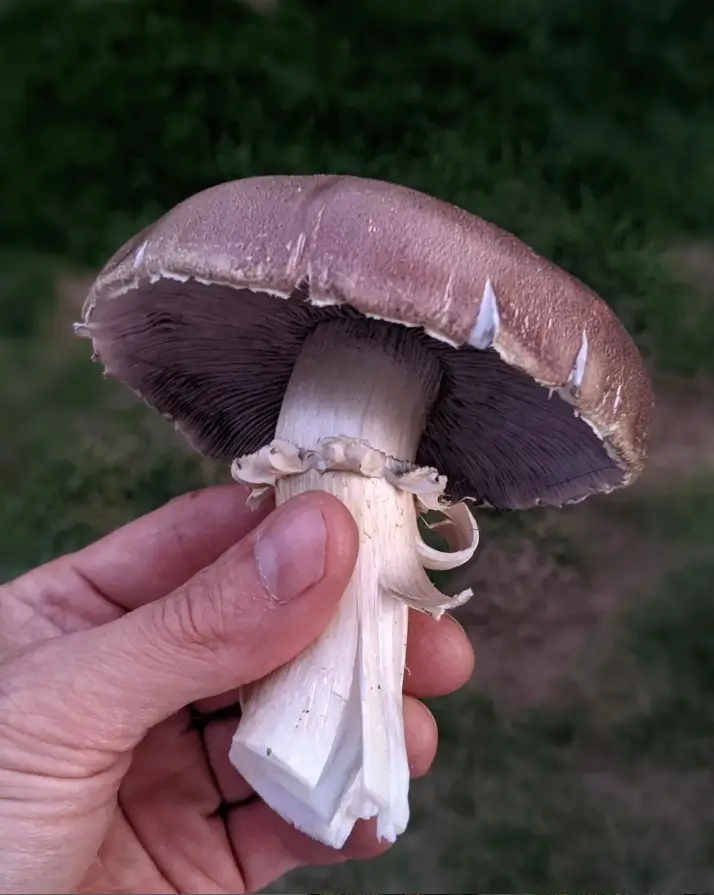
How to Preserve Wine Cap Mushrooms
Preserving wine cap mushrooms is a great way to enjoy their delicious flavor and extend their shelf life. Whether you have harvested an abundant crop or want to store some for future use, there are a few methods you can use to preserve wine cap mushrooms.
Storing Wine Cap Mushrooms
If you plan to use the wine cap mushrooms within a few days, storing them in a paper bag in the refrigerator is a simple and effective method. Remember not to wash the mushrooms before storage, as excessive moisture can cause them to spoil quickly. Place the mushrooms in a single layer in the paper bag, close it loosely to allow for airflow, and store it in the refrigerator.
Drying Wine Cap Mushrooms
Drying wine cap mushrooms is an excellent option for long-term storage. The drying process removes moisture from the mushrooms, preventing mold and extending their shelf life. To dry wine cap mushrooms, follow these steps:
- Clean the mushrooms by gently brushing off any dirt or debris.
- Cut the mushrooms into thin, even slices to promote even drying.
- Spread the mushroom slices on a food dehydrator tray in a single layer. Ensure there is enough space between the slices for proper airflow.
- Set the dehydrator to a temperature of around 135°F (57°C) and allow the mushrooms to dry for several hours or until they become dry and crisp.
- Once the mushrooms are completely dry, transfer them to an airtight container or a sealed bag for storage.
Dried wine cap mushrooms can be rehydrated by soaking them in warm water for about 20 minutes before use. They can be added to stocks, soups, sauces, and other delicious dishes.
| Preservation Method | Pros | Cons |
|---|---|---|
| Refrigeration | – Keeps mushrooms fresh for a few days – Easy to store | – Limited shelf life – Risk of spoilage if not used quickly |
| Drying | – Long shelf life – Retains flavor and nutritional value – Easy to rehydrate | – Requires a food dehydrator or drying equipment – Longer preparation time |
Table: Pros and cons of different wine cap mushroom preservation methods.
By preserving your wine cap mushrooms, you can enjoy their unique flavor and culinary versatility throughout the year. Whether you choose to store them in the refrigerator or dry them for long-term storage, these preservation methods will ensure that you have a supply of wine cap mushrooms whenever you need them.
Troubleshooting Common Wine Cap Mushroom Problems
Even this beginner-friendly mushroom can encounter challenges. Identifying and addressing common issues ensures successful cultivation.
Slow or No Mycelium Growth
Possible Causes:
- Substrate too dry or too wet
- Temperature extremes (below 50°F or above 85°F)
- Poor quality or expired spawn
- Contamination from competing organisms
- Insufficient spawn rate for substrate volume
Solutions:
- Adjust moisture levels – substrate should feel damp but not waterlogged
- Provide temperature protection during extremes
- Purchase fresh spawn from reputable suppliers
- Increase spawn rate to 15-20% of substrate volume
- Ensure proper pasteurization of substrate before inoculation
Contamination Issues
Common Contaminants:
- Green or black mold (Trichoderma or Aspergillus species)
- Bacterial blotch (wet, slimy areas with unpleasant odor)
- Competitor fungi (other mushroom species)
- Slime molds (bright yellow or orange growths)
Prevention and Treatment:
- Use properly pasteurized substrate
- Maintain clean working conditions during inoculation
- Remove visibly contaminated areas immediately
- Apply hydrogen peroxide solution (3%) to affected areas
- Isolate contaminated beds from healthy ones
- In severe cases, remove and replace contaminated substrate
Pest Management
Common Pests:
- Slugs and snails
- Fungus gnats
- Springtails
- Mushroom flies
- Rodents
Organic Control Methods:
- Create physical barriers with copper tape or diatomaceous earth
- Set up beer traps for slugs and snails
- Use yellow sticky traps for flying insects
- Apply beneficial nematodes to control soil pests
- Create hardware cloth barriers to prevent rodent access
- Time harvests to avoid peak pest activity periods
Environmental Challenges
Weather-Related Issues:
- Drought stress (dry, cracking substrate)
- Excessive rain (waterlogged substrate)
- Temperature extremes (freezing or excessive heat)
- High winds (drying effects)
Protective Measures:
- Adjust watering schedule based on weather conditions
- Apply additional mulch during dry periods
- Create drainage channels during rainy seasons
- Use row covers during extreme temperatures
- Install windbreaks for exposed beds
Integrating Wine Cap Mushrooms into Sustainable Systems
Wine cap mushrooms offer numerous benefits when integrated into sustainable gardening systems, particularly in permaculture practices. These mushrooms serve as valuable allies in recycling organic waste, improving soil health, and providing a nutritious food source. By incorporating wine cap mushroom cultivation techniques into your sustainable gardening endeavors, you can create a self-sufficient and regenerative system that benefits both the environment and your own food production.
In permaculture, wine cap mushrooms play a crucial role in the decomposition process. They thrive on woody mulch and can easily break it down into nutrient-rich compost, contributing to soil fertility. Moreover, these mushrooms help in creating a favorable soil microbiome by fostering beneficial bacteria and fungi, leading to enhanced soil structure and nutrient availability.
By cultivating wine cap mushrooms in your sustainable garden, you can establish a mutually beneficial relationship between the mushrooms and other plants. The mushrooms, with their mycelium network, improve nutrient flow and aeration, while the surrounding plants contribute to creating the ideal microclimate for mushroom growth. This synergistic interaction promotes overall ecosystem health and supports sustainable gardening practices.
To incorporate wine cap mushrooms effectively, consider preparing dedicated mushroom beds or incorporating them into existing garden beds or permaculture systems. Choose suitable areas with naturally moist soil, and provide shade or canopy cover for optimal mushroom growth. With careful cultivation and attention to sustainable techniques, wine cap mushrooms can be a valuable asset in your sustainable gardening efforts.
FAQ
Why should I consider growing wine cap mushrooms?
Wine cap mushrooms are easy to grow, improve soil health, and have a unique flavor for culinary use.
How do mushrooms improve the soil?
Mushrooms break down organic matter, create channels in the soil for better nutrient flow, and contribute to a diverse soil microbiome.
Where can I grow wine cap mushrooms?
Wine cap mushrooms can be grown in garden beds, raised beds, and even in shady areas with moist soil.
How do I grow wine cap mushrooms?
Spread a suitable substrate on the soil, mix in wine cap mushroom spawn, keep the substrate moist, and wait for the mushrooms to fruit.
Where can I buy wine cap mushroom spawn?
Wine cap mushroom spawn can be purchased from suppliers such as Field and Forest Products or online mushroom cultivation stores.
How can I identify wine cap mushrooms?
Wine cap mushrooms have red-wine colored caps, grey-violet gills, and a creamy-white stalk with an annulus or ring.
How do I harvest wine cap mushrooms?
Harvest the mushrooms when the caps are fully opened, trim off the base, and inspect for any inhabitants before cooking.
How can I cook wine cap mushrooms?
Wine cap mushrooms can be sautéed, added to soups and stews, or stuffed and baked. They have a nutty and earthy flavor.
How can I preserve wine cap mushrooms?
Store them in a paper bag in the refrigerator for a few days or dry them using a food dehydrator for long-term storage.
What are the benefits of growing wine caps in the garden?
Wine cap mushrooms enhance soil fertility, build organic matter, contribute to permaculture systems, and add diversity to the garden ecosystem.
What are some tips for growing wine cap mushrooms?
Choose the right substrate, maintain proper moisture levels, select suitable growing locations, and manage pests and diseases.
What are common wine cap mushroom growing problems and how can I troubleshoot them?
Common problems include inadequate fruiting, contamination, pests, and diseases. These can be addressed by proper substrate preparation, optimal growing conditions, and pest management strategies.
How can wine cap mushrooms be integrated into sustainable systems?
Wine cap mushrooms can help recycle organic waste, improve soil health, and provide a valuable food source in sustainable gardening and permaculture systems.

